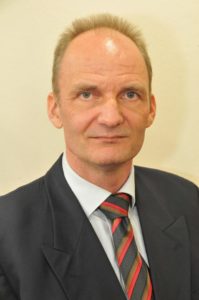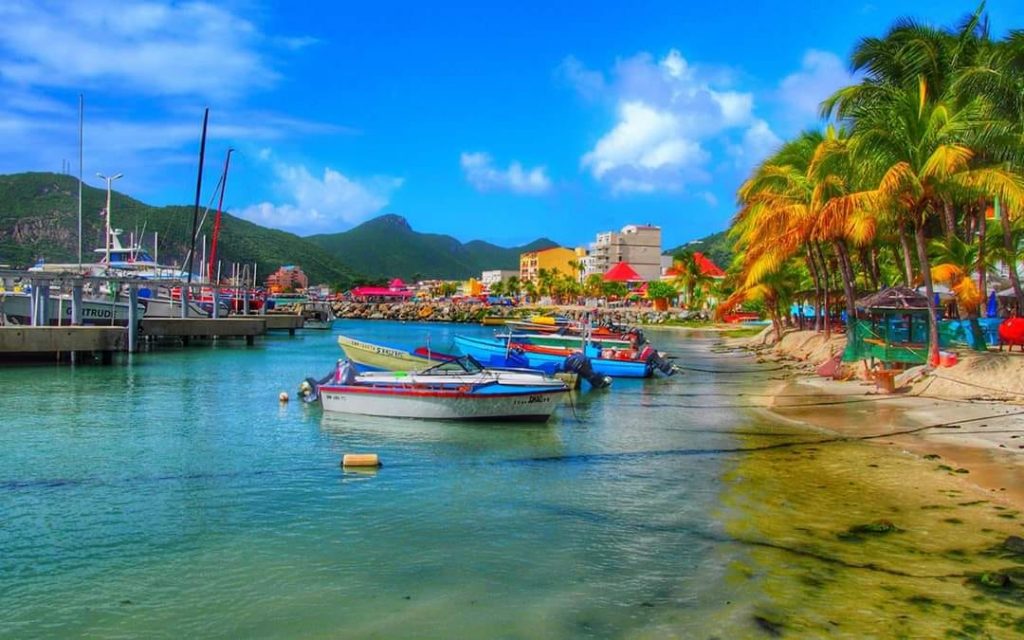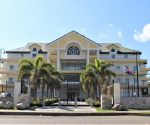EXCLUSIVE: “Tourism industry exceeds carrying capacity”
 ~ Review Thesis of Arjen Alberts: “Tourism industry exceeds carrying capacity” ~
~ Review Thesis of Arjen Alberts: “Tourism industry exceeds carrying capacity” ~
PHILIPSBURG – “I will show that Small Islands Tourism Economies not only exceeded their carrying capacity but also no longer show any increase in productivity.” This is the premise of economist Arjen Alberts’ thesis “Small Island Tourism Economies and the Tourism Area Lifecycle; Why Aruba and Sint Maarten have exceeded their carrying capacity.” Alberts defends his thesis on September 21 in the Agnietenkapel at the University of Amsterdam to obtain his doctoral degree.
The thesis is under embargo until the date of Alberts’ promotion, but he allowed StMaartenNews.com to publish data from two chapters of his 127-page study. Data from chapter two were earlier published in an article entitled Immigration Dependent Extensive Growth in Small Islands Tourist Economies: The Cases of Aruba and St. Maarten (International Development Planning Review 38 – Alberts 2016).
Alberts’ thesis arrives at an appropriate time when St. Maarten’s tourism industry has been devastated by the COVID-19 crisis; it will provide local decision-makers with useful insights in the best way to rebuild and reshape the industry.
Chapter two begins with a presentation of data. St. Maarten’s population was 30,000 in 2006 when annual stay-over tourists numbered 486,000 and cruise tourists 1,438,000. The average stay was five nights and room capacity stood at 3,532.
Tourist spending per year was $652 and spending per resident was $21,733. There were 345 tourists per 1,000 inhabitants and 103.9 rooms per square kilometer.
In 1997 the cruise tourists outnumbered stay-over tourists 60 to 40. Ten years later the percentage of stay-over tourists dropped to 25 percent of the total and cruise tourists represented the other 75 percent.
One almost immediate effect of the exploding tourism industry was that it outgrew the supply on the local labor market. Johnson (1987) wrote already about it: “The uncontrolled growth of the island has led to a massive influx of workers, the majority of whom come from other Caribbean islands.”
According to Haan (1998) in 1981, 40 percent of the population was born on the island, 20 percent on other islands of the Netherlands Antilles, while 40 percent were immigrants from the surrounding region.
Alberts notes that St. Maarten’s population statistics should be handled with caution. In 1995 the number of undocumented immigrants was estimated to be between 10,000 and 12,000 – roughly 25 percent of the population.
The direct contributions of total stay-over tourism and cruise tourism to St. Maarten’s gross domestic product (GDP) are 56 to 44 percent in favor of stay-over tourism. That’s certainly something to think about.
The thesis takes a closer look at the effect of tourism-development on the economy. “A 20 percent drop in stay-over tourists and a 250 percent rise of cruise arrivals compared to 1991 levels should have resulted in GDP-growth of more than the 60 percent now recorded. Therefore, there is a lack of translation of tourism volume growth into real GDP increase, and therefore a lack of productivity growth.”
Further, development increases the volume of tourism as well as the volume of the labor force, partly through immigration, Alberts notes in his thesis. “However, the quality of economic activity in terms of productivity remains unchanged. This effect is compounded when taking into account that the proportion of economically active persons to the total population actually increased through immigration, as immigrants mostly fall into economically active age groups.”
Looking at the effect of immigration-dependent, extensive economic growth trends, and the obvious spatial constraints the outlook for Sint Maarten (and Aruba) seems bleak, Alberts writes.

“The bulk of the current hospitality industry needs to shrink in quantity and grow in quality.”
He furthermore notes: “The intensity of the tourism industry and the increasing population density negatively affect the tourism product and the quality of life. St. Maarten has been residing in the consolidation stage for decades and the extensive growth model must be in the interest of the major stakeholders. The bulk of the current hospitality industry needs to shrink in quantity and grow in quality.”
Here is another fact that requires some thinking: real GDP growth has not exceeded production growth since 1990.
At the end of the chapter, Alberts presents his thoughts on the future. “The perspective is either one of stagnation when the current model hits its physical boundaries, or one of evolution, where a different type of investment, embodying a higher level of technology, is combined with a more highly educated workforce and a more effective government administration, to increase productivity and real per capita GDP.”
Related: Tourism thesis: time is running out for St. Maarten
###
Recommended reading:
St. Maarten informal economy grounded to a halt
Trash walking in St. Maarten
Turn islands into Dutch municipalities
St. Maarten under the threat of the coronavirus























